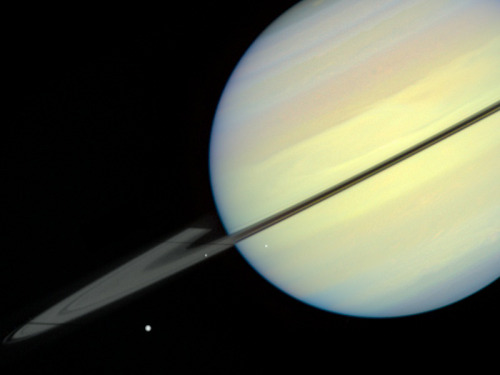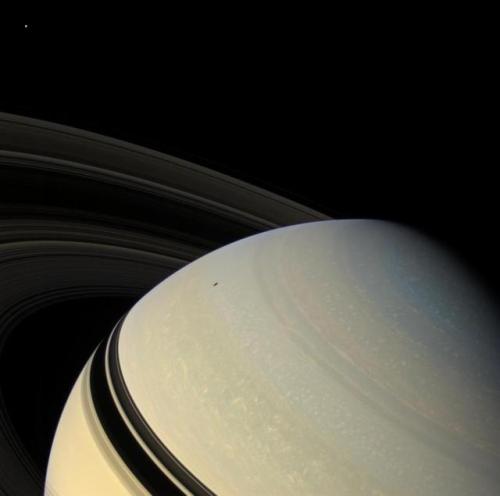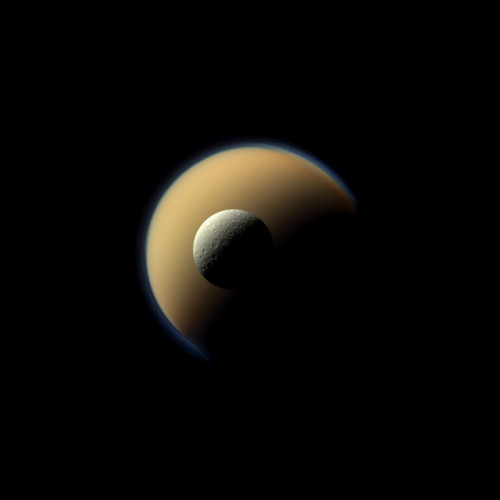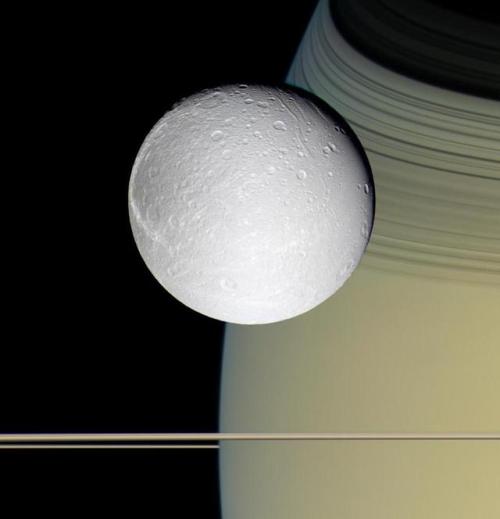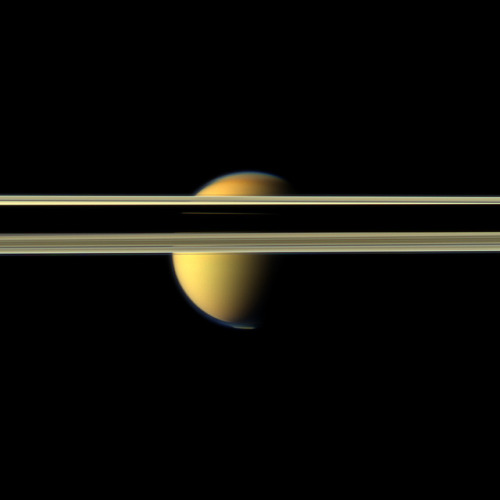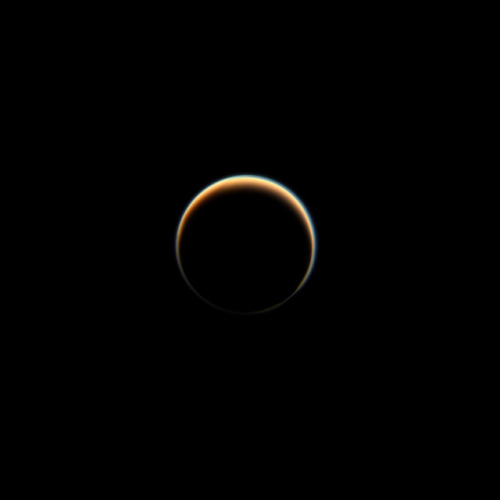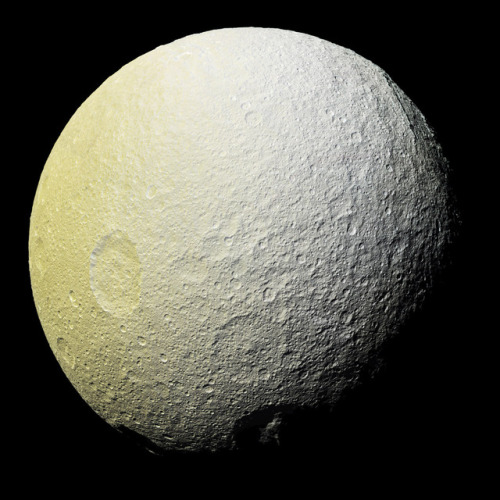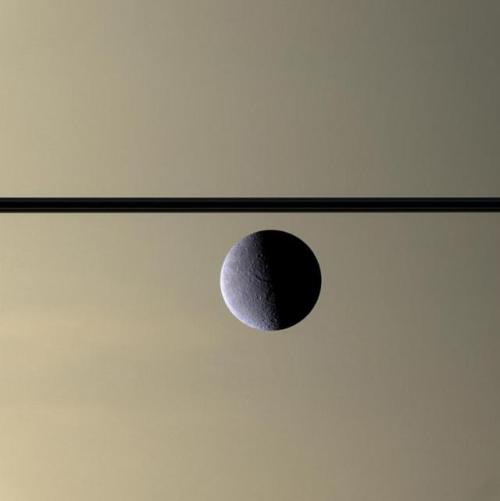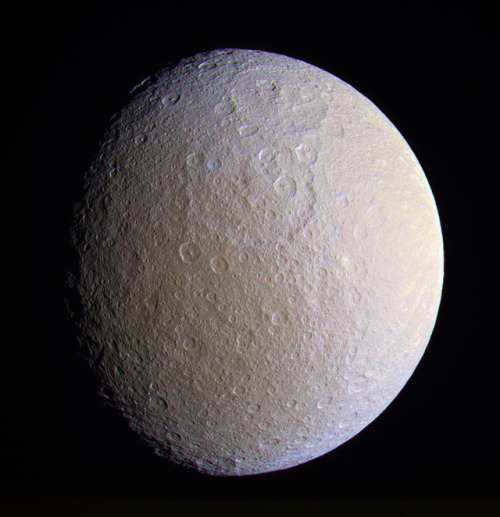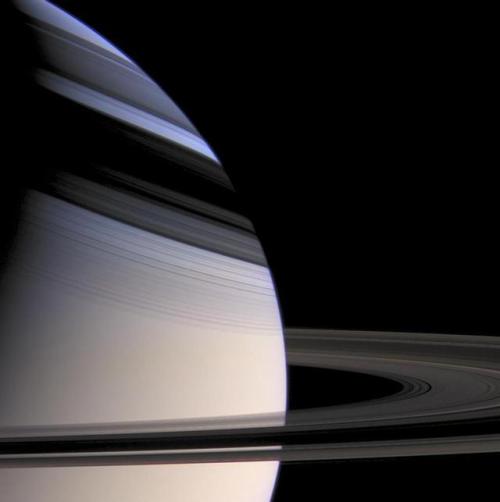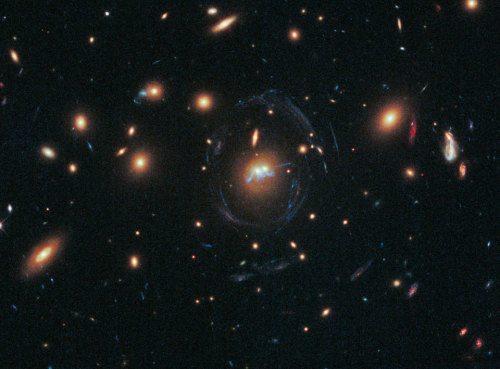Flying Across The Universe (From Top To Bottom: Horsehead Nebula, Orion Nebula, Eagle Nebula, Tarantula
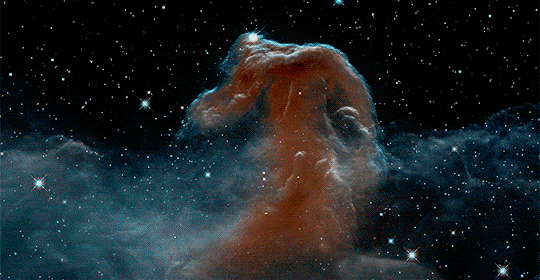
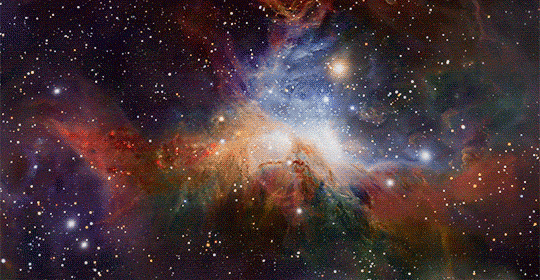
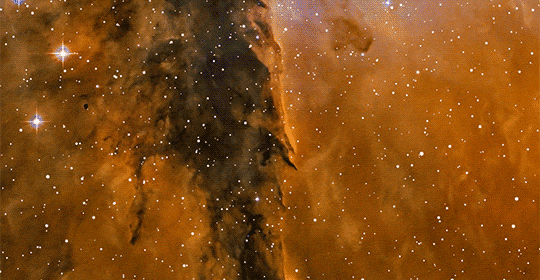

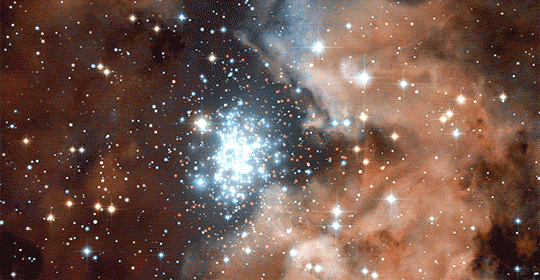
Flying Across The Universe (From Top to Bottom: Horsehead Nebula, Orion Nebula, Eagle Nebula, Tarantula Nebula, and NGC 3603)
More Posts from Xnzda and Others

Grand Spiral Galaxy - M 100
Known as a grand design spiral galaxy, M100 is a large galaxy of over 100 billion stars with spiral arms that are like our own Milky Way Galaxy. This Hubble Space Telescope image of M100 was made in 2009 and reveals bright blue star clusters and intricate winding dust lanes which are hallmarks of this class of galaxies. Studies of variable stars in M100 have played an important role in determining the size and age of the Universe.
Credit: NASA/APOD

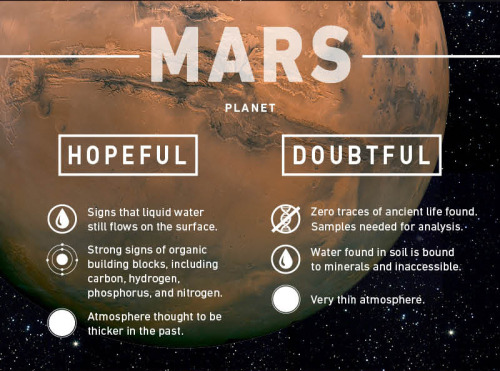
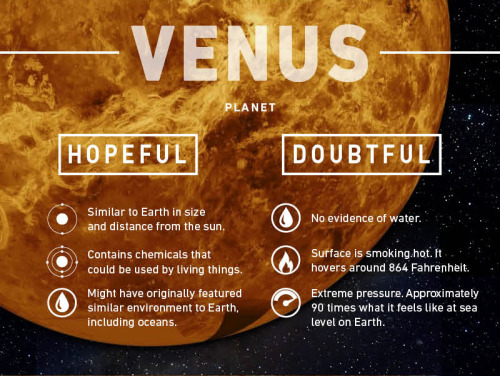
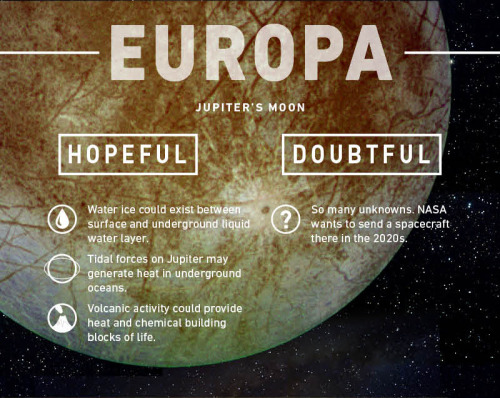
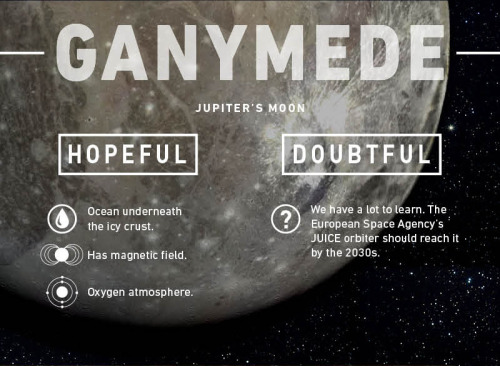



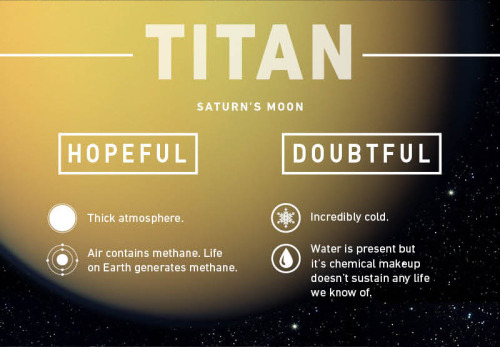
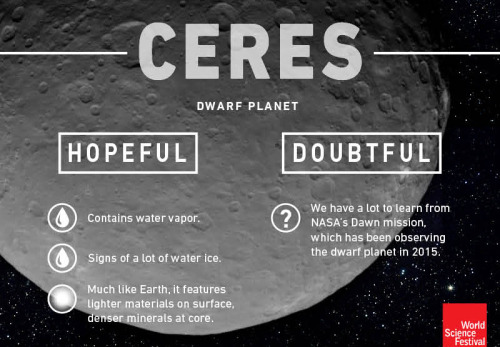
Where Could Life Exist?
When NASA scientists announced earlier this year that they had found evidence of liquid water on Mars, imaginations ran wild with the possibility that life could exist somewhere other than here on Earth.
Scientists continue to explore the possibility that Mars once looked a lot like Earth — salty oceans, fresh water lakes, and a water cycle to go with it. That’s exciting stuff.
So where else are they looking? What exactly are they looking for?
There are nine places in our universe where scientists say life is a possibility. The locations range from a smoking hot planet like Venus to a moon that orbits Saturn called Enceladus, which looks a lot like a massive, tightly-packed ball of ice.
All of these places show signs that water is, or at least was, a possibility. They also appear to feature some kind of energy that could produce heat.
full resolution


Michael Benson
1. Mimas Above Saturn’s Rings and Shadows, Cassini, November, 7, 2004
2. Mimas Transits Saturn’s Ring Shadows, Cassini, January 18, 2005

Atmospheric Jellyfish are described as jellyfish-like creature seen floating in the Earth’s atmosphere. Atmospheric Jellyfish are said to look like normal jellyfish except they are floating in the sky much like a cloud and are seen mostly around military bases. Skeptics believe that the Atmospheric Jellyfish could be misidentified clouds or weather balloons however believers hold true to the idea and remember the time that NASA sent 60,000 jellyfish into space during their From Undersea to Outer Space experiment.

In this amazing Hubble Space Telescope image, a blue bubble-like nebula surrounds a Wolf–Rayet star WR 31a, located about 30,000 light-years away in the constellation of Carina (The Keel). Wolf–Rayet stars are the most massive and brightest stars known, and their lifecycle is only a few hundred thousand years — a blink of an eye in cosmic terms.
Image credit: ESA/Hubble & NASA, Acknowledgement: Judy Schmidt

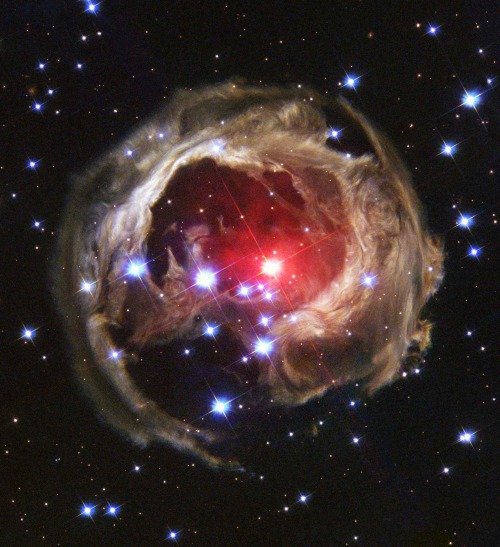
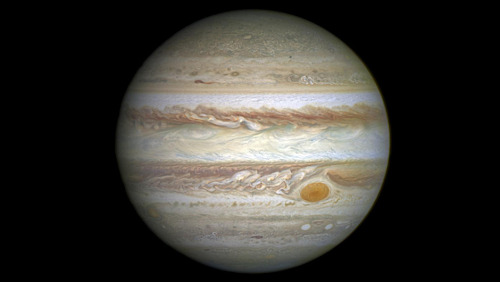
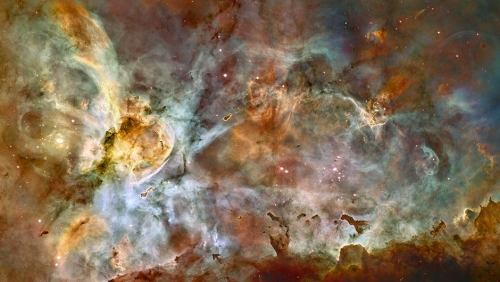
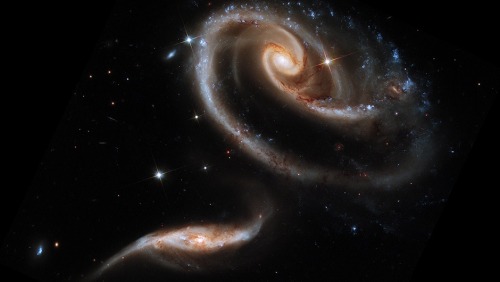

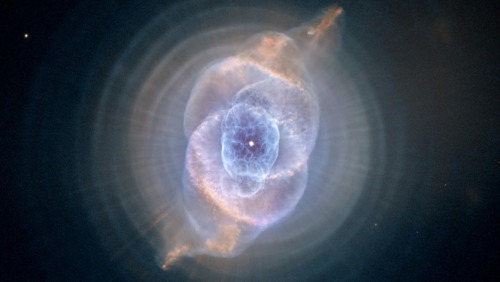
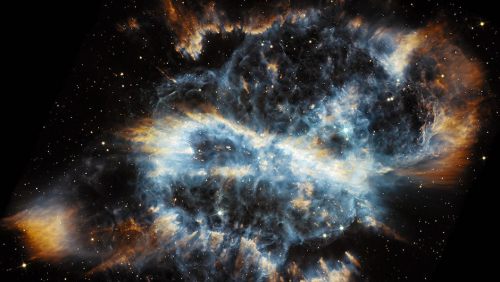
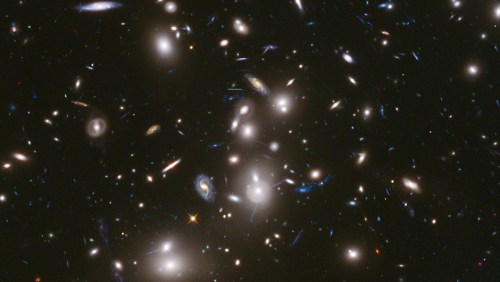
The best photographs that the Hubble space telescope has ever taken.
1. Sombrero galaxy
2. V838 Monocerotis
3. Jupiter’s great red spot
4. Carina nebula
5. Interacting galaxies
6. Pillars of creation
7. Cat’s eye nebula
8. Planetary Nebula NGC 5189
9. Abell 2744 Frontier Field
(Source)

M51: The Whirlpool Galaxy
Credit: NASA, ESA, S. Beckwith (STScI), and the Hubble Heritage Team (STScI/AURA)
-
 mysweetsageofgrace reblogged this · 3 months ago
mysweetsageofgrace reblogged this · 3 months ago -
 dapperchimpanzee reblogged this · 3 months ago
dapperchimpanzee reblogged this · 3 months ago -
 draborangutan reblogged this · 3 months ago
draborangutan reblogged this · 3 months ago -
 dapperchimpanzee liked this · 3 months ago
dapperchimpanzee liked this · 3 months ago -
 edenforest liked this · 4 months ago
edenforest liked this · 4 months ago -
 edenforest reblogged this · 4 months ago
edenforest reblogged this · 4 months ago -
 larklatroy liked this · 4 months ago
larklatroy liked this · 4 months ago -
 louwitcher liked this · 4 months ago
louwitcher liked this · 4 months ago -
 cynssia liked this · 4 months ago
cynssia liked this · 4 months ago -
 expert-texpert reblogged this · 4 months ago
expert-texpert reblogged this · 4 months ago -
 tortugatortas liked this · 4 months ago
tortugatortas liked this · 4 months ago -
 dailymusemaniac reblogged this · 4 months ago
dailymusemaniac reblogged this · 4 months ago -
 dailymusemaniac liked this · 4 months ago
dailymusemaniac liked this · 4 months ago -
 expert-texpert liked this · 4 months ago
expert-texpert liked this · 4 months ago -
 the-beauty-and-the-rage reblogged this · 4 months ago
the-beauty-and-the-rage reblogged this · 4 months ago -
 the-beauty-and-the-rage liked this · 4 months ago
the-beauty-and-the-rage liked this · 4 months ago -
 adriennegabriella reblogged this · 4 months ago
adriennegabriella reblogged this · 4 months ago -
 adriennegabriella liked this · 4 months ago
adriennegabriella liked this · 4 months ago -
 cometsofdoom liked this · 4 months ago
cometsofdoom liked this · 4 months ago -
 lotusgurl1 reblogged this · 4 months ago
lotusgurl1 reblogged this · 4 months ago -
 fantastic-cupcake reblogged this · 4 months ago
fantastic-cupcake reblogged this · 4 months ago -
 fantastic-cupcake liked this · 4 months ago
fantastic-cupcake liked this · 4 months ago -
 finchlette reblogged this · 4 months ago
finchlette reblogged this · 4 months ago -
 jezabatlovesbats liked this · 4 months ago
jezabatlovesbats liked this · 4 months ago -
 redlkia liked this · 4 months ago
redlkia liked this · 4 months ago -
 driven-by-this-need reblogged this · 4 months ago
driven-by-this-need reblogged this · 4 months ago -
 talesfuzzy liked this · 4 months ago
talesfuzzy liked this · 4 months ago -
 saephrond liked this · 4 months ago
saephrond liked this · 4 months ago -
 bishopxq liked this · 4 months ago
bishopxq liked this · 4 months ago -
 xenonrose reblogged this · 4 months ago
xenonrose reblogged this · 4 months ago -
 monkholico liked this · 4 months ago
monkholico liked this · 4 months ago -
 danncannibal liked this · 4 months ago
danncannibal liked this · 4 months ago -
 mydogdoesnotbite liked this · 4 months ago
mydogdoesnotbite liked this · 4 months ago -
 simbilmyne liked this · 4 months ago
simbilmyne liked this · 4 months ago -
 swordsagedachsie reblogged this · 4 months ago
swordsagedachsie reblogged this · 4 months ago -
 cho-yongchul liked this · 4 months ago
cho-yongchul liked this · 4 months ago -
 all-hail-the-gitrog-toad reblogged this · 4 months ago
all-hail-the-gitrog-toad reblogged this · 4 months ago -
 all-hail-the-gitrog-toad liked this · 4 months ago
all-hail-the-gitrog-toad liked this · 4 months ago -
 elgaladwen reblogged this · 4 months ago
elgaladwen reblogged this · 4 months ago -
 elgaladwen liked this · 4 months ago
elgaladwen liked this · 4 months ago -
 madmax76d reblogged this · 4 months ago
madmax76d reblogged this · 4 months ago -
 madmax76d liked this · 4 months ago
madmax76d liked this · 4 months ago -
 nokashikiari liked this · 4 months ago
nokashikiari liked this · 4 months ago -
 mkm4002 liked this · 4 months ago
mkm4002 liked this · 4 months ago -
 chriscartoonsblog liked this · 4 months ago
chriscartoonsblog liked this · 4 months ago -
 ibrithir-was-here liked this · 4 months ago
ibrithir-was-here liked this · 4 months ago -
 mpp987 liked this · 4 months ago
mpp987 liked this · 4 months ago -
 magewaywardtocolover liked this · 4 months ago
magewaywardtocolover liked this · 4 months ago -
 dddemigirl reblogged this · 4 months ago
dddemigirl reblogged this · 4 months ago

